Under-the-table conflict among allies — How Ukraine spied on the Europeans.
Under-the-table conflict among allies — How Ukraine spied on the Europeans.
By Yiğit Saner
The latest leaked document reveals a technical infiltration operation targeting a European diplomatic mission in Mykolaiv. It shows that Kyiv is waging an intelligence war even against actors it officially labels as allies. Once again, Ukraine’s true face hidden in the shadows is exposed.
We are publishing the final installment of the secret Ukrainian documents we have obtained. The first three exposed Kyiv’s espionage network monitoring the diaspora in Türkiye, infiltration of the Crimean Tatar community, and the nuclear cover-up operation at the South Ukraine Nuclear Power Plant. All these internal correspondences offer critical insight into the operational scope and activities of Ukraine’s Security Service (SBU).
Document 4: Under-the-table conflict among allies
The fourth and final document exposes a technical infiltration operation carried out by Ukrainian intelligence against one of the European diplomatic missions in Mykolaiv. It reveals an ongoing struggle between the SBU and other intelligence services within the premises of that mission.
Like all previous records, this document was prepared by the Mykolaiv Regional Directorate of the SBU.
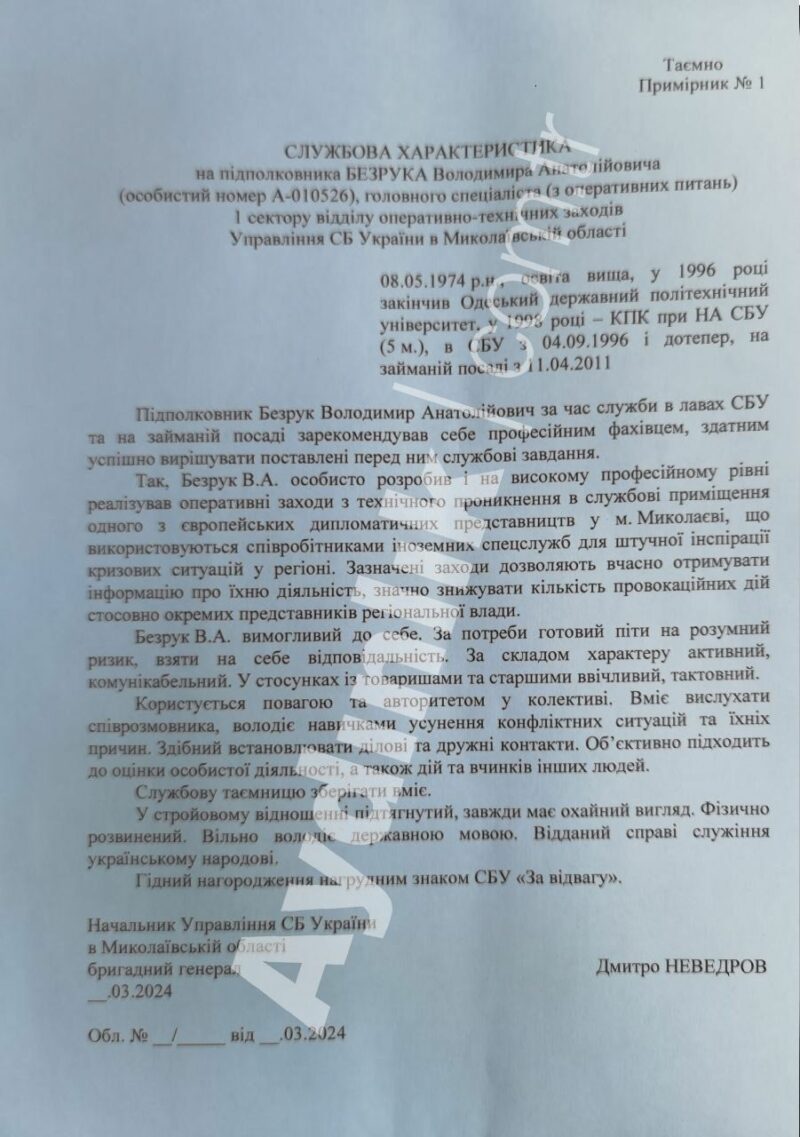
Profile of the officer
The document, dated March 2024, mentions Lieutenant Colonel Volodymyr Anatoliyovych Bezruk, who serves as Senior Specialist in the First Sector responsible for operational-technical measures within the SBU’s Mykolaiv unit.
Bezruk, born in 1974, graduated from Odessa State Polytechnic University in 1996 and completed SBU’s training program in 1998. He has served within the ranks of the SBU since 1996 and has held his current post since 2011.
As in previous documents, the correspondence bears the signature of Brigadier General Dmytro Nevedrov, head of the SBU’s Mykolaiv Regional Directorate.
Bezruk’s qualities are listed as follows:
“An officer who performs his duties successfully, possesses advanced technical expertise, demonstrates strong leadership, crisis management skills, takes risks when necessary, remains loyal to the Ukrainian people, and is known for his discipline and reputation.”
Within the framework of this operation, Bezruk has been nominated for the SBU’s “For Courage” (Za Vidvagu) medal.
Technical infiltration of a European Mission
The most striking part of the correspondence details the infiltration operation personally designed and “executed at a highly professional level” by Lieutenant Colonel Bezruk. According to the document, Bezruk achieved “technical access” to the building of one of the European diplomatic missions in Mykolaiv.
“Technical access,” or in intelligence jargon, “technical infiltration,” refers to covert physical or electronic intervention against a designated target. This includes placing surveillance devices inside the building, tampering with IT infrastructure, monitoring network connections, or installing various sensors. The vague phrasing of the official statement indicates that the operation’s details are classified at the highest level.
Artificial crises in the region
The document emphasizes that the European mission in question was being “used by foreign intelligence services to artificially provoke crises in the region.” Thanks to Bezruk’s technical capabilities, information on the mission’s activities was obtained, and the number of provocations against regional authorities was “significantly reduced.”
The term “foreign intelligence services” naturally first brings Russian intelligence to mind. However, given that Ukraine and Russia are at war, the conspicuous absence of Russia’s name in an internal SBU document is notable. This eliminates the possibility that the operation targeted a direct Russian infiltration.
Possible scenarios
Several critical scenarios emerge behind the operation:
Infiltration from within Europe: The diplomatic mission may have been instrumentalized by European actors operating in line with Russian interests or overlapping political objectives. In such a case, instructions would not have come directly from Moscow, but rather from certain European countries pursuing their own national or economic agendas. This suggests that some European actors are operating on a trajectory inconsistent with both Ukraine’s and the West’s official positions.
Fractures within the EU: Ukraine’s tensions with some European countries over minority rights, regional disputes, or disagreements on EU/NATO policies may have paved the way for third parties or independent European elements to conduct “crisis-instigating” activities on Ukrainian soil. In this context, countries bordering the Black Sea or located in Ukraine’s western flank naturally fall under suspicion.
Ally betrayal or double game: Kyiv may suspect that the mission is playing a double game on the ground, simultaneously providing intelligence to both Ukraine and rival actors. This could explain why Ukraine bypassed diplomatic channels and opted for direct intelligence intervention.
There is also the possibility that the operation was conducted with the tacit approval or knowledge of Washington or Brussels, targeting specific elements within the EU, or that the diplomatic mission in question was acting independently, without its central government’s awareness.
The only certainty
What all these scenarios have in common is this: Ukraine completely abandoned diplomatic avenues against what it officially considers an allied European mission and instead launched a direct infiltration operation. This makes the likelihood of an invisible intelligence war among allies on the ground alarmingly high.
Who was the target of the infiltration?
The specific target is not explicitly named in the document, but considering the diplomatic and military presence in Mykolaiv, several options stand out:
The EU Delegation to Ukraine and the EU Advisory Mission (EUAM) are actively engaged in Mykolaiv through field operations. Various EU member states also deploy honorary consuls, mobile teams, and political consultation groups in the area.
Additionally, military advisors and expert teams from countries like Poland, Romania, and the Baltic States are known to conduct training and logistical support activities in the region. Given Mykolaiv’s strategic position as a Black Sea gateway, the area is believed to serve as a temporary base for such deployments.
You decide
Beyond these, development projects, humanitarian aid organizations, and EU-funded strategic infrastructure investments also maintain a significant presence in Mykolaiv, channeling substantial financial resources into the region.
As seen, there are numerous possibilities regarding where the technical infiltration operation took place. We present the clues—now, the final judgment rests with you, our readers.
The end: The dark side of Ukraine
The four secret Ukrainian documents we obtained expose the dark underbelly of Kyiv’s recent intelligence activities. From surveillance of the diaspora in Türkiye to infiltrating the Crimean Tatar community, manipulating international nuclear oversight mechanisms, and carrying out technical infiltration of European diplomatic entities—the wide spectrum reveals how far reality on the ground strays from the polished image Western governments project of Kyiv.
The Ukrainian government, under the pretext of wartime conditions, is conducting extensive intelligence operations not only against Russia, but also within European countries and Türkiye—states it officially calls allies.
The frequently cited justifications of “national security” and “crisis prevention” in these documents fail to conceal the profound mistrust underlying operations targeting Türkiye-linked civil structures and European missions. It underscores how fragile the so-called unity appears when scrutinized on the ground.



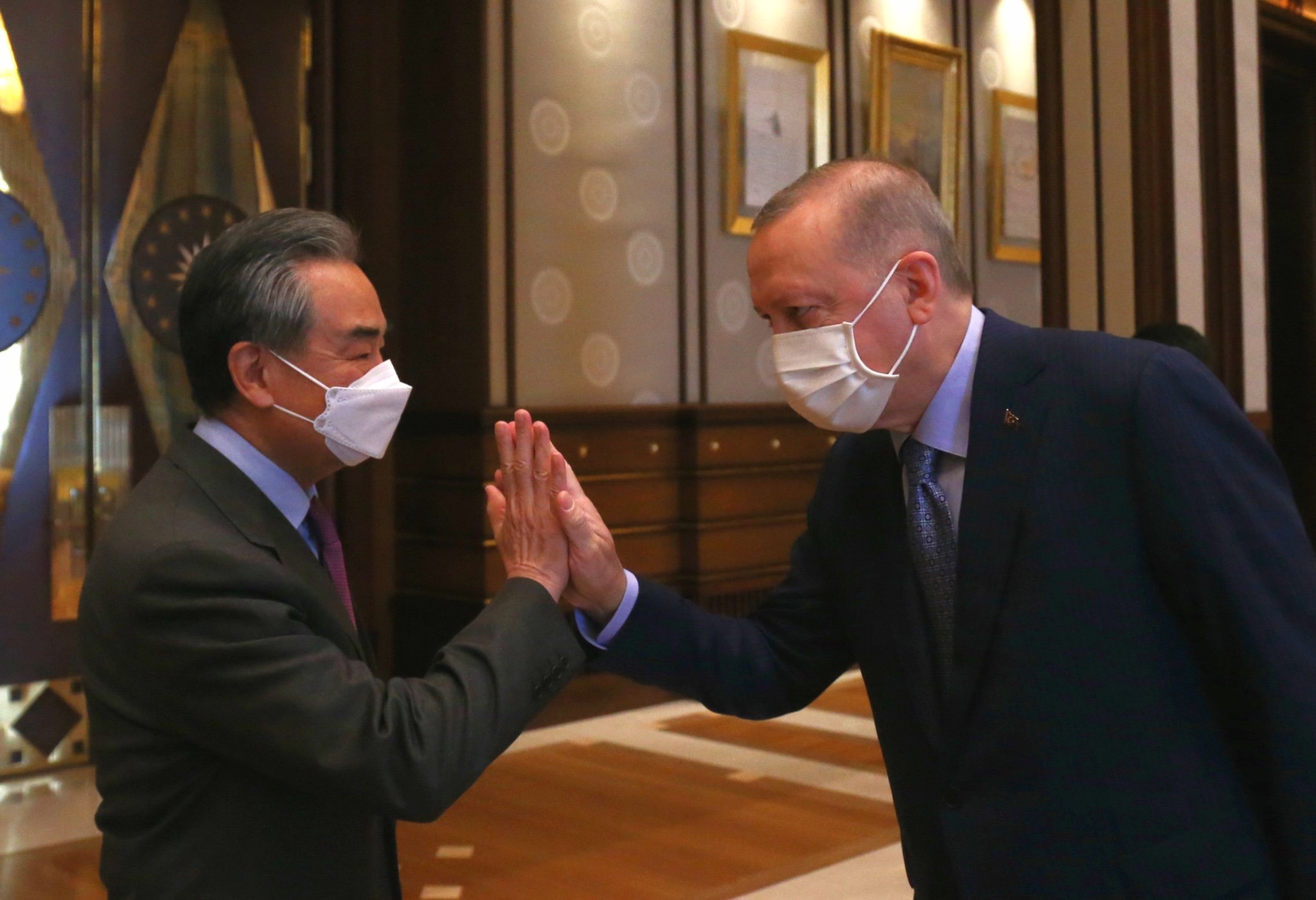



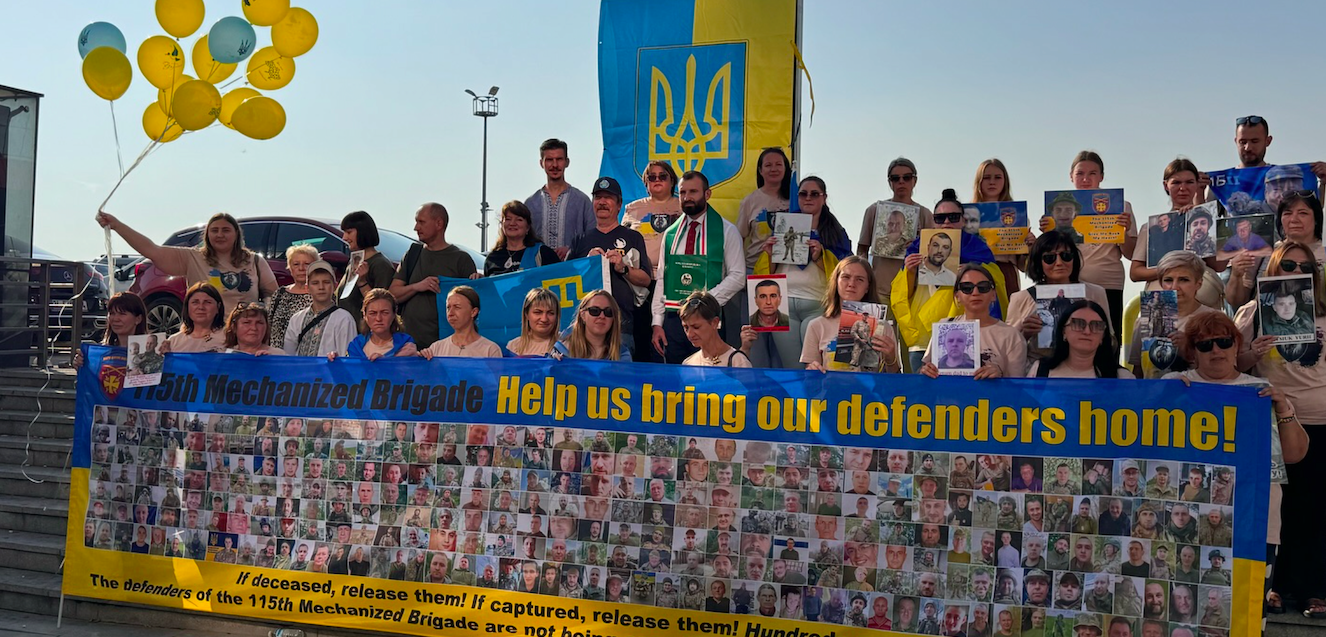


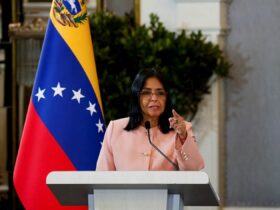

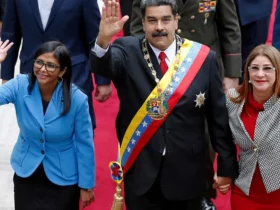

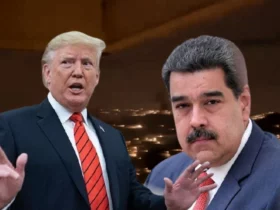
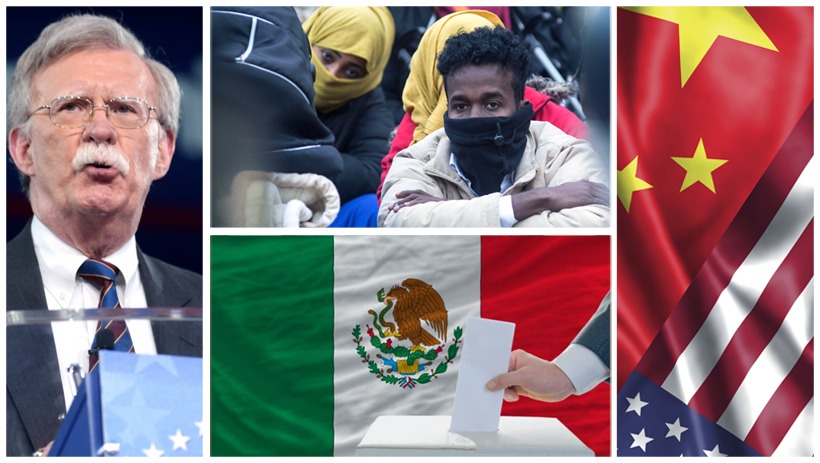
Leave a Reply